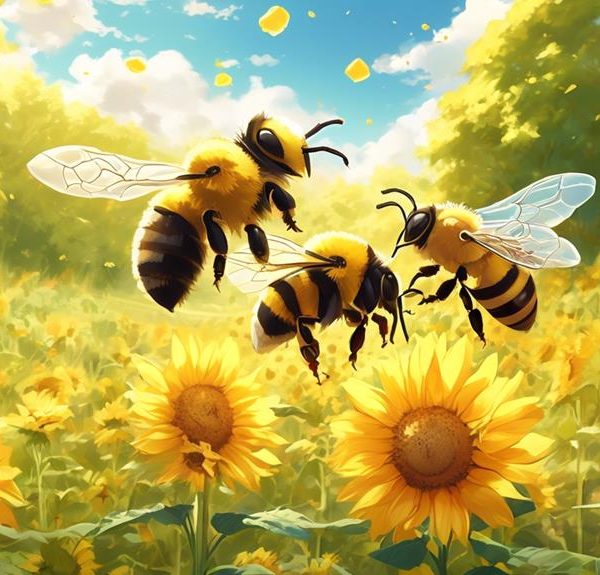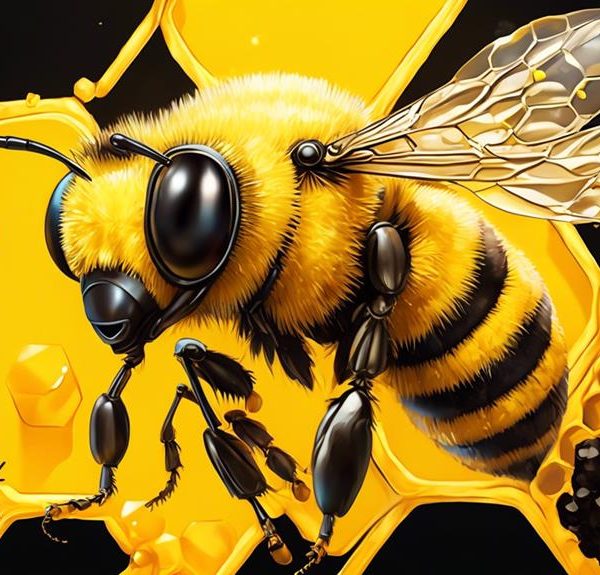Learn about the intriguing intersection of entomology and musicology as we explore if bees possess a preference for the rhythmic beats of jazz.
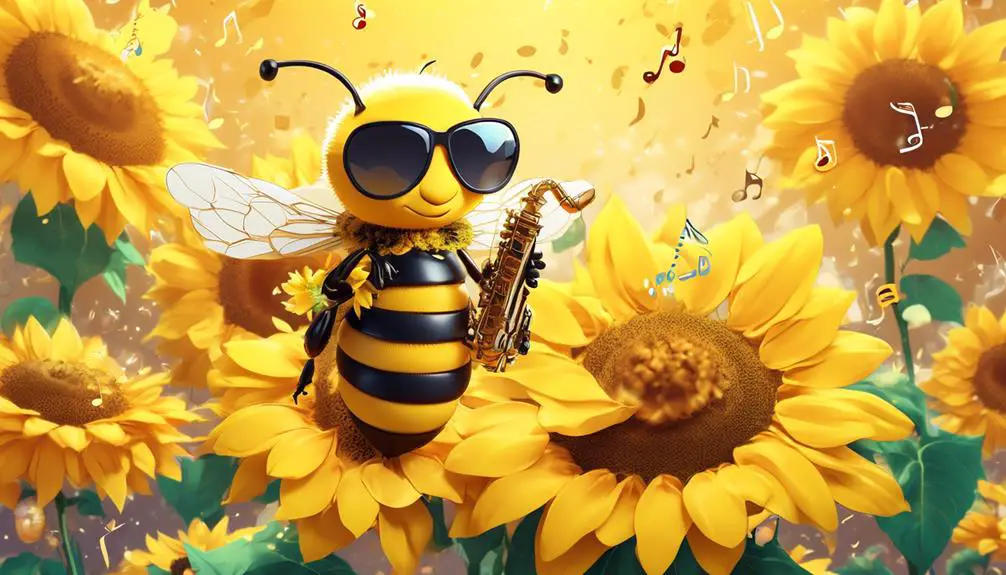
Do Bees Like Jazz?
You've seen them, you've heard them, and perhaps you've even been stung by them. Bees, the small but vital pollinators, have been a subject of countless studies, debates, and discussions.
But have you ever considered if these industrious insects have a preference for music, specifically jazz? As you ponder this peculiar question, take into account the potential effects of sound frequencies on bee behavior, as well as the rhythmic components found in jazz music.
This unique intersection of entomology and musicology may hold more significance than one might initially perceive, inviting us to tune in for a deeper exploration.
Key Takeaways
- Bees use the waggle dance to communicate information about food sources.
- Bees can perceive sound vibrations through their antennae's Johnston's organ.
- Jazz music can influence bees' behavior, while classical music calms them and rock music makes them more aggressive.
- Playing jazz music near hives may have positive effects on bees in beekeeping practices.
Understanding Bee Communication
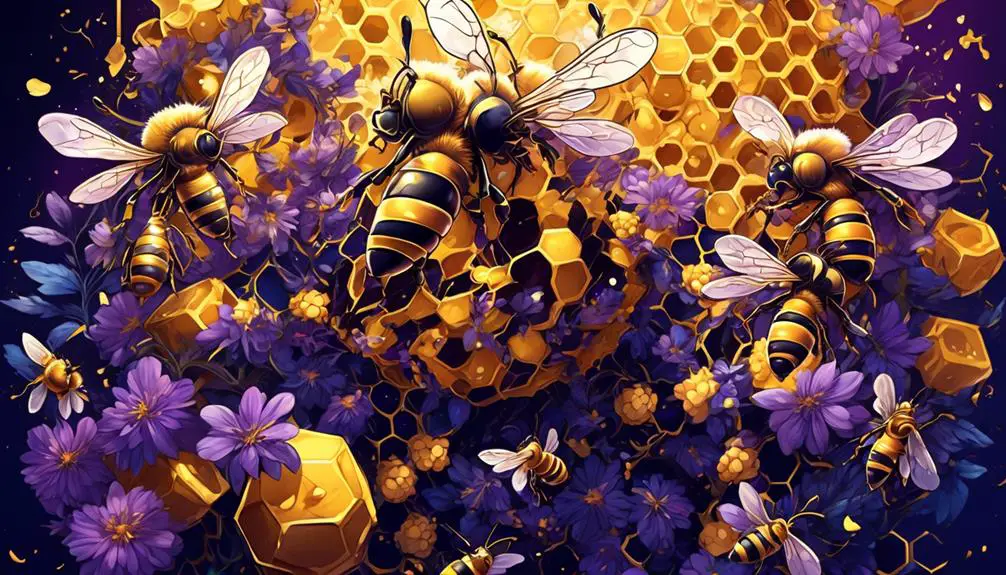
To truly appreciate the intriguing world of bees and their affinity for rhythmic patterns, you need to delve into the complex intricacies of bee communication, a fascinating dance of signals and responses. You see, bees employ a unique form of communication known as the 'waggle dance'. This isn't just random gyrations; it's a calculated, intricate process that enables them to share vital information about the location of food sources with their hive mates.
Now, let's unpack this a bit. When a bee discovers a rich nectar source, it'll return to the hive and perform this dance. The direction, duration, and intensity of the waggle dance all carry specific meanings. For instance, the direction of the dance in relation to the sun signifies the direction of the food source. The length of the dance denotes the distance, and the intensity of the waggling serves as an indicator of the richness of the source.
It's truly a marvel of nature's engineering. Understanding this form of communication sheds light on how bees might perceive rhythmic patterns such as jazz, offering insights into the puzzling question: Do bees like jazz?
The Science of Sound Perception in Bees
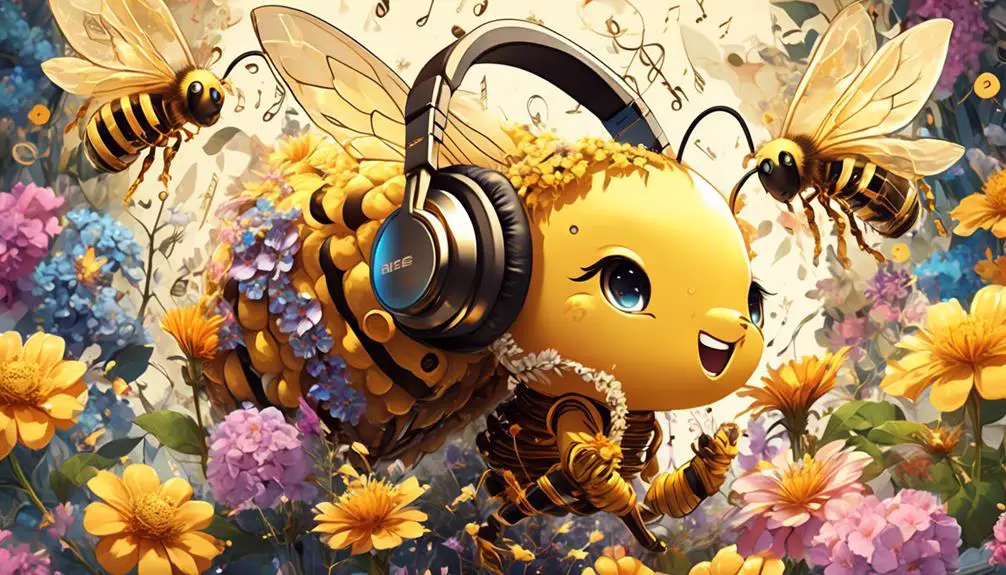
Delving into the science of sound perception in bees, you'll find that these tiny insects are capable of picking up vibrations and converting them into a sensory modality, much like how humans perceive music. They've a specialized organ, the Johnston's organ, located in their antennae, which acts as a sound receptor.
The vibrating air molecules, which we perceive as sound, cause the antenna to move, triggering the Johnston's organ. This organ then transforms these mechanical vibrations into electrical signals that the bee brain can interpret. It's a remarkable process, essentially allowing bees to 'hear' in their unique way.
Research has shown that bees can detect a frequency range of about 200 to 500 Hz, which coincidentally, is the range that encompasses many of the sounds of buzzing bees and humming flowers – key elements in their environment.
It's also worth mentioning that this range includes some of the low-frequency notes found in jazz music.
Jazz: A Brief Overview
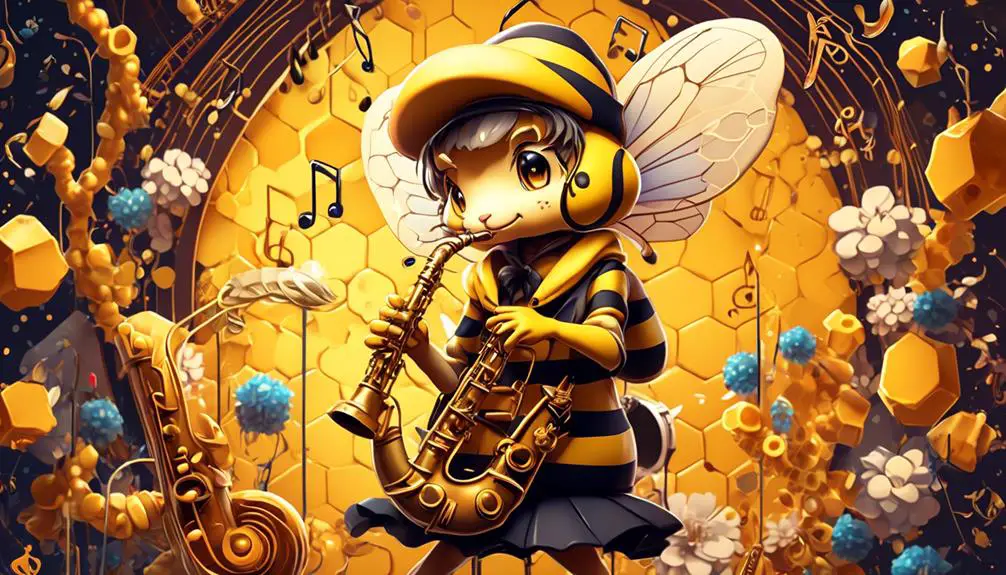
Dipping your toes into the world of jazz, you'd find it to be a multifaceted musical genre that emerged in the late 19th century, characterized by its unique rhythm and improvisational style, elements that surprisingly resonate within the auditory range of bees.
This American-born art form has its roots in African and European musical traditions, blending blues, ragtime, and marching band music into a nuanced sound palette. As you delve deeper, you'd understand that jazz is less about melody and more about rhythm and "swing," the collective improvisation that creates a conversation between musicians.
To simplify the essence of jazz, consider the following table:
Element | Description |
|---|---|
Improvisation | Spontaneous creation of music during the performance |
Syncopation | Deliberate disruption of regular beats |
Swing | A specific rhythmic feel, often described as a 'groove' |
Blue Notes | Notes sung or played at a slightly lower pitch for expressive purposes |
Call-and-Response | A pattern where a musician proposes a phrase and another responds |
Bees and Their Response to Music
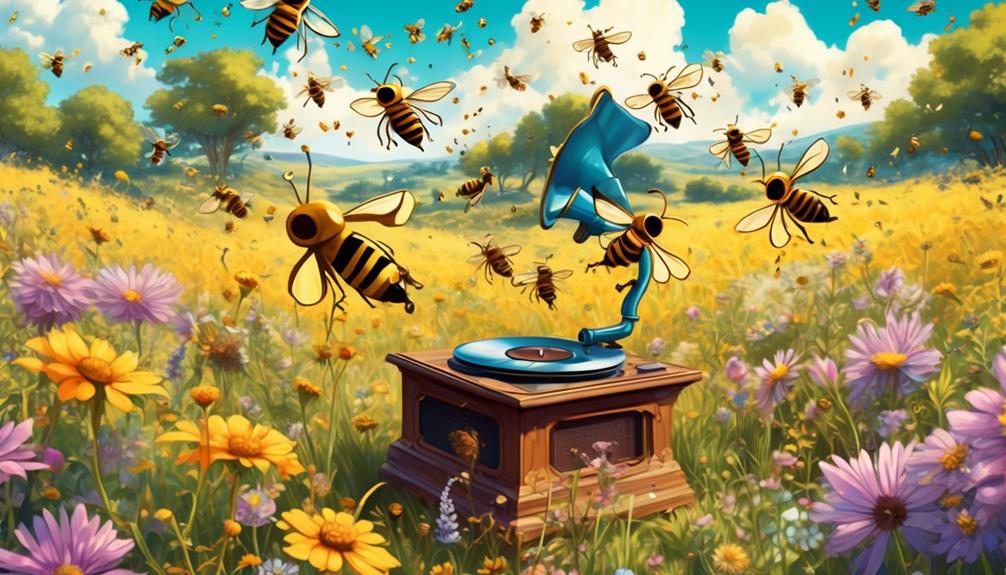
Building on our understanding of jazz's unique attributes, let's explore how bees, with their exceptional auditory capabilities, respond to this genre of music.
Bees, like many insects, possess an organ called the Johnston's organ, located in their antennae, that detects sound vibrations. They also have the ability to distinguish different rhythmic patterns, a key component of music.
When exposed to jazz music, bees show intriguing behavioural changes. Studies indicate that playing jazz music can influence the speed at which bees fly, the number of flowers they visit, and even the efficiency of their pollen collection. The rhythmic patterns and vibrations of jazz music appear to stimulate their auditory systems in a way that heightens their activity levels.
However, it's not just about jazz. Bees have also shown responses to other forms of music. For instance, classical music seems to calm bees and reduce their flight speed, whereas rock music can make them more aggressive. So, it seems that bees don't just 'hear' music, they respond to it in different ways depending on the genre. This suggests a level of auditory sophistication that's quite remarkable in the insect world.
Fascinating, isn't it?
Exploring the Jazz-Bee Connection

To truly grasp the jazz-bee connection, it's crucial to understand the scientific principles behind the bees' unique response to this music genre. When you expose bees to jazz music, specific patterns emerge in their behavior. This isn't just a coincidence, but the result of the frequencies and rhythm that resonate with their innate sensory perceptions.
In a bid to simplify things, let's break down the connection using a table:
Factors | Jazz Effect | Bee Behavior |
|---|---|---|
Rhythm | Jazz has a distinct syncopated rhythm. | Bees respond positively to rhythmic patterns, influencing their movement. |
Frequency | Jazz often has low, mellow frequencies. | Bees are attracted to these frequencies, aiding in communication. |
Complexity | Jazz is rich and complex | Bees show increased activity, suggesting stimulation. |
The scientific principles mentioned above further illustrate how jazz influences bee behavior. It's a fascinating area of study, and with more research, you could uncover even more intriguing aspects of the jazz-bee relationship. By exploring this connection, we're not only exploring a truly unique instance of interspecies communication, but also expanding our knowledge of how music impacts the natural world.
Implications for Beekeeping Practices
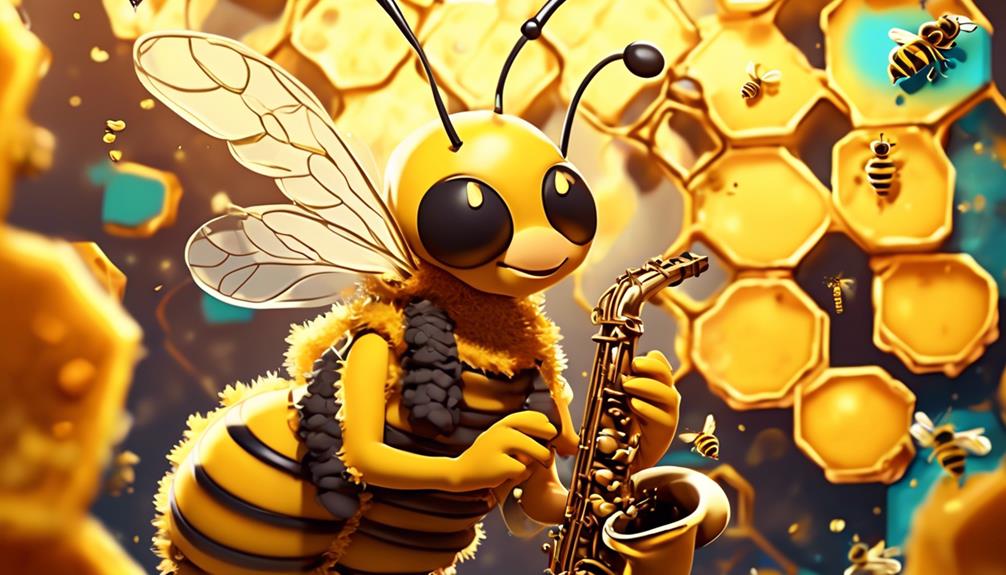
So, how can this intriguing jazz-bee connection influence beekeeping practices? If bees indeed respond positively to jazz, you may wish to consider integrating music into your beekeeping protocols. By playing jazz music near hives, you could potentially create a more relaxing environment that promotes increased productivity.
However, it's not as simple as just pressing play on a Coltrane album. The volume, frequency, and timing of the music are all factors that need to be meticulously managed. Too loud or too frequent, and you might distress the bees rather than soothe them. The optimal conditions for 'bee jazz therapy', as it were, are still being researched.
Furthermore, this isn't a one-size-fits-all solution. Different bee species may react differently to jazz music, and individual hive personalities can vary. It's also crucial to monitor hives for signs of stress or agitation when introducing new stimuli, such as music.
Lastly, remember that this is a fairly new area of study. While the early signs are promising, more scientific research is needed to confirm the benefits of jazz for bees. So, before you start blasting Miles Davis at your hives, make sure to stay updated on the latest research in this fascinating field.
Frequently Asked Questions
What Other Types of Music Have Been Tested on Bees and What Were the Results?
You're curious about what other music types have been tested on bees.
Well, studies have found that classical music can enhance bees' productivity.
Rock music, on the other hand, seemed to stress them out, reducing their honey production.
It's clear that bees respond to different music genres in unique ways, but more research is needed to better understand these fascinating creatures' reactions to music.
How Does the Bees' Reaction to Jazz Music Compare to Their Reaction to Other Natural Sounds in Their Environment?
You're asking how bees react to jazz compared to natural sounds.
Studies show that bees, like many animals, are indeed sensitive to sound. However, they're more responsive to vibrations and frequencies similar to those found in their natural environment (like wind or other bees buzzing), rather than music genres like jazz.
Simply put, while they can 'sense' the music, it doesn't attract them as strongly as natural, environmental sounds.
Could the Exposure to Different Types of Music Potentially Harm the Bees or Disrupt Their Natural Behavior?
While there's no definitive research showing music, including jazz, harms bees or disrupts their behavior, it's crucial to consider their sensitivity to vibrations. Bees communicate using vibrations, so blasting tunes could potentially interfere with this.
However, don't panic yet. More research is needed before we can say it's truly harmful.
Are There Any Practical Applications for This Research in Areas Outside of Beekeeping?
Sure, there're numerous applications for this research outside of beekeeping. For instance, it could help in understanding how other insects respond to sound stimuli, potentially leading to new pest control methods.
It can also aid scientists in learning more about animal cognition. Plus, your research could even influence how we design soundscapes in zoos, aquariums, and wildlife parks to enhance animal welfare.
It's a fascinating field with many potential benefits.
Has Similar Research Been Conducted on Other Insects or Animals and Their Reactions to Different Genres of Music?
Yes, similar research has been conducted on other animals. For instance, cows have been found to produce more milk when listening to slow music. Birds also react to music, showing preference for certain melodies. There's also evidence that dogs and cats can respond to music, though it's tailored to their auditory range.
It's a fascinating field, isn't it? The power of music transcends human boundaries, impacting the animal kingdom too.
Conclusion
So, do bees like jazz? Well, science suggests they may just. They understand vibrations and can respond to music, including jazz.
This fascinating connection could even influence beekeeping strategies. But remember, more research is needed to fully understand the complexities of bee communication and their response to music.
Who knows, you may soon find yourself playing a little Miles Davis for your buzzy friends in the garden.

